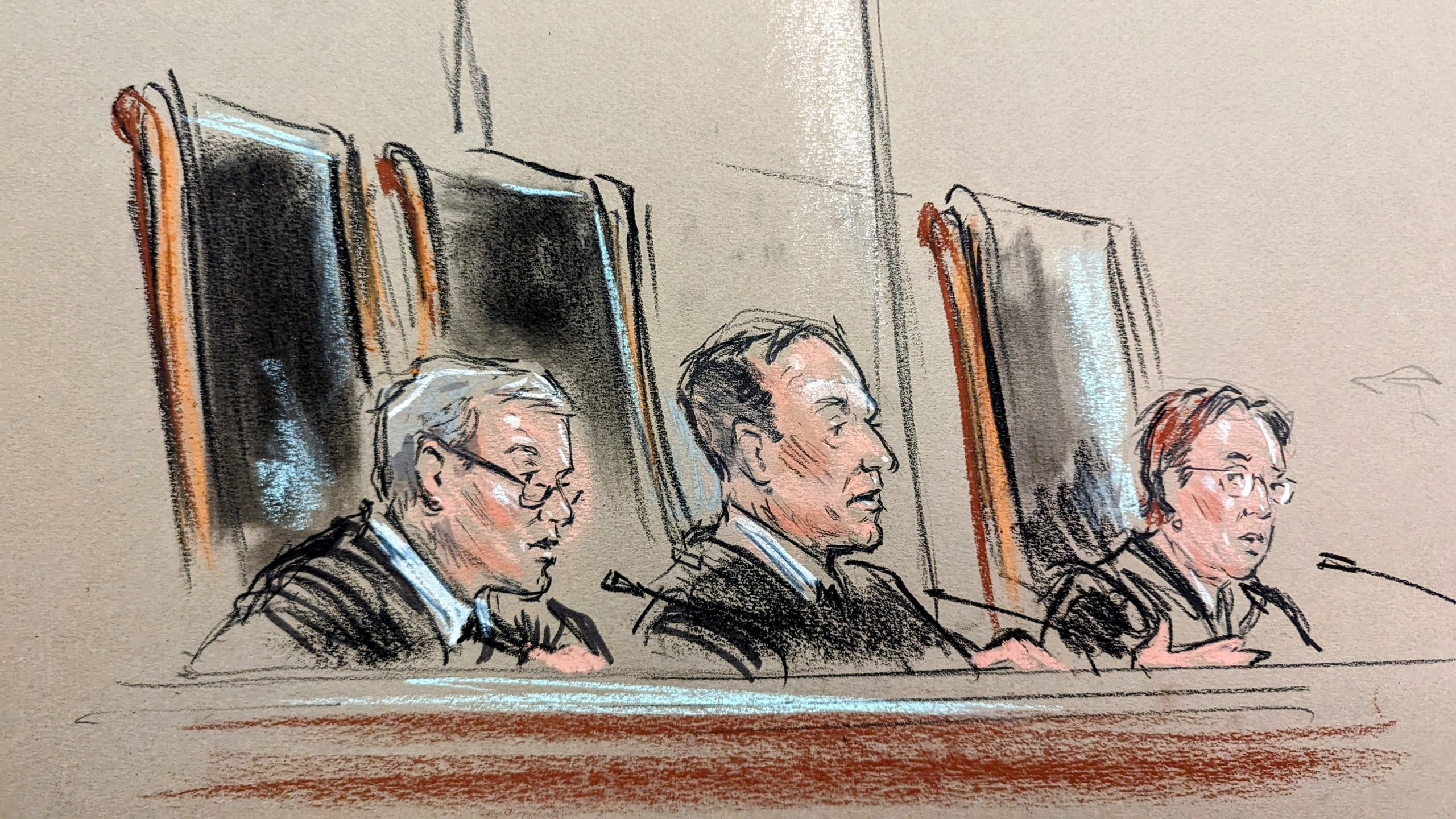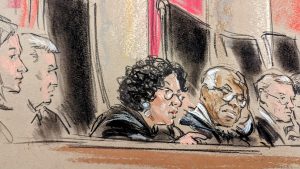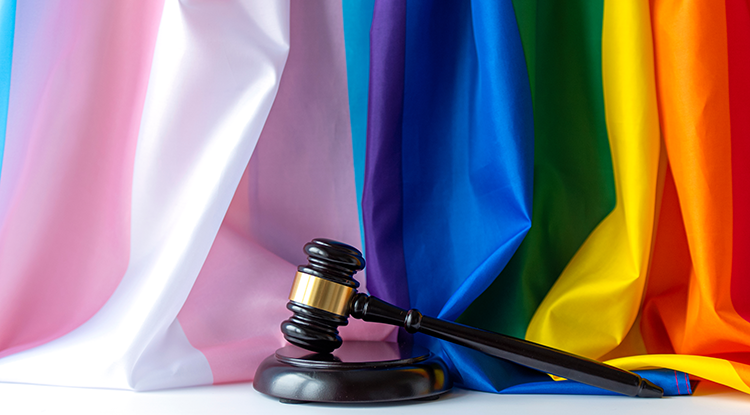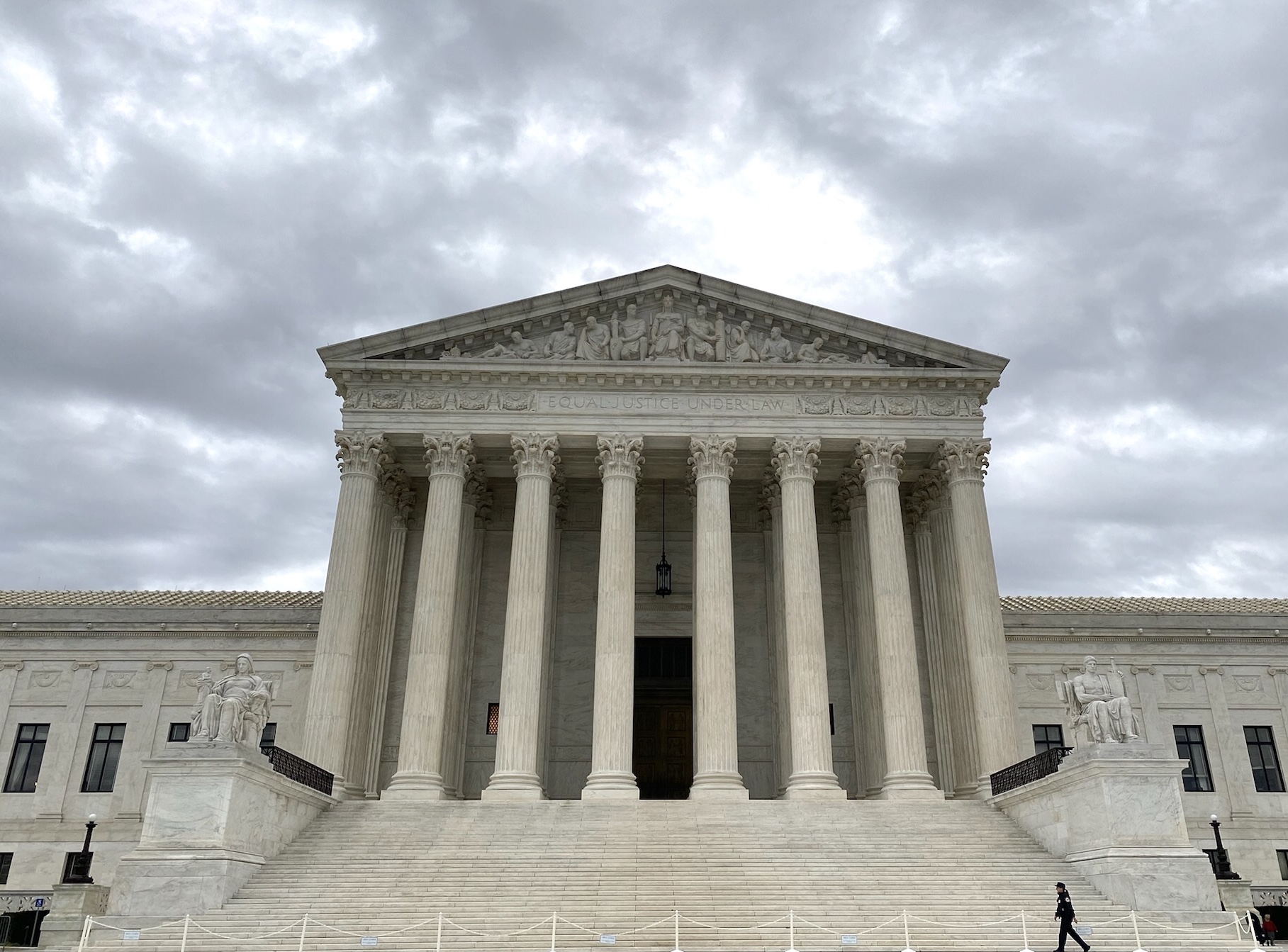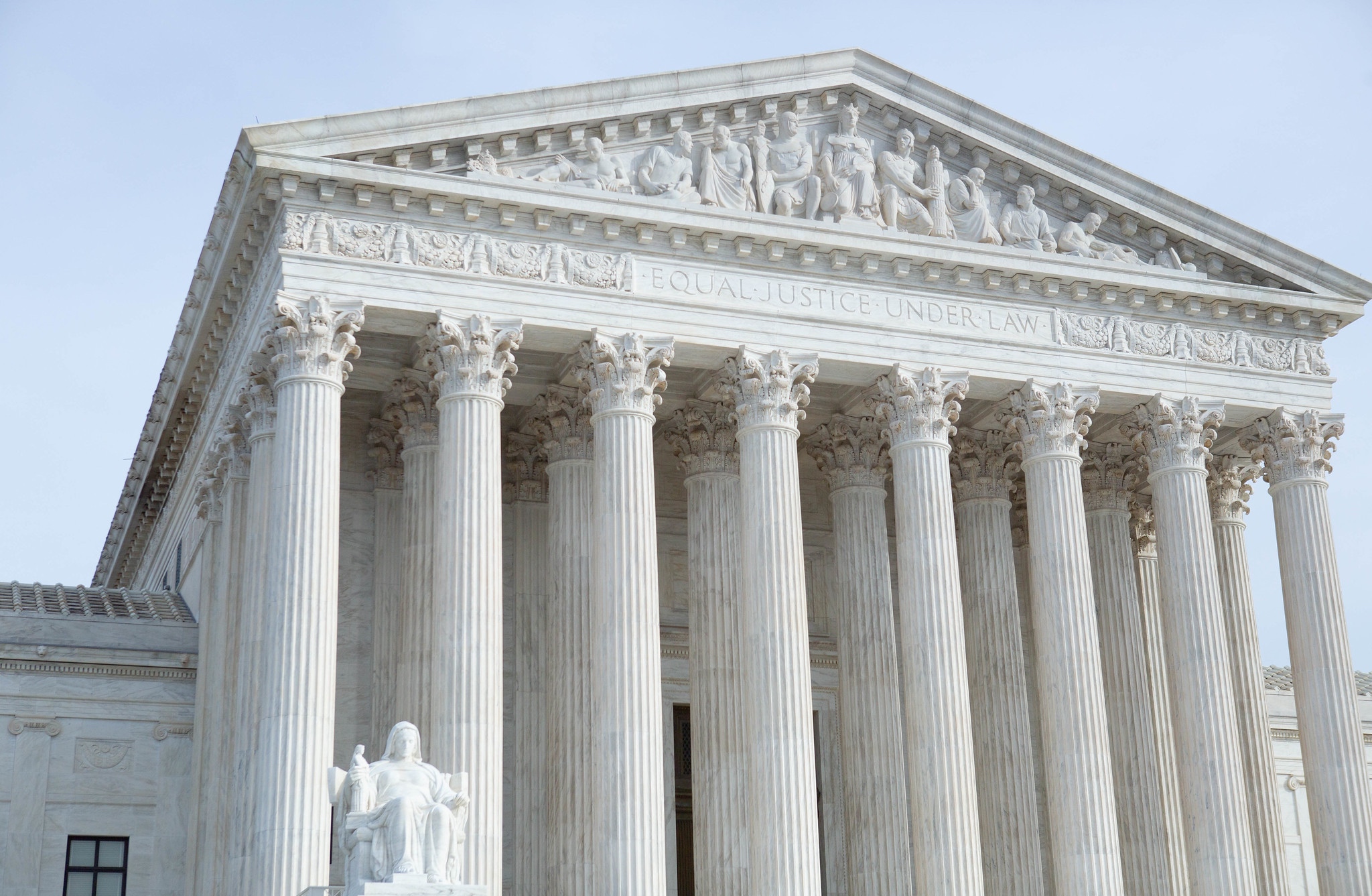Last day of the term
A VIEW FROM THE COURT
on Jul 1, 2023
at 6:42 pm
Chief Justice John Roberts delivers the opinion in Biden v. Nebraska. (William Hennessy)
As the court issued its last decisions of the term in recent days, I was reminded of something I read in the court’s employee newsletter back in late winter. It was a story about new health and wellness programs being offered in the court’s gym, including Zumba and yoga classes and access to the Peloton and Calm apps. The Calm app “provides users with a number of guided meditations” and there were also plans for a new “dedicated relaxation room” somewhere in the building. The justices have appeared relatively serene and calm this term, so it occurs to me that perhaps the courtroom is the dedicated relaxation room.
But on this final week of the term, the Calm app appears to need updating and the relaxation room is closed for renovation.
There have been some sharp elbows in this week’s written opinions, and the opinion announcements from the bench, which included the first-ever oral concurrence by Justice Clarence Thomas, two oral dissents by Justice Sonia Sotomayor, and one dissent by Justice Elena Kagan, exposed rifts and deep feelings.
On Friday, the courtroom’s public gallery is full again, while the bar section has only handful of lawyers. Among them is Jordan Lorence of Alliance Defending Freedom, the organization representing Colorado wedding website designer Lorie Smith. ADF President Kristen Waggoner, who argued Smith’s case, and Smith herself, are not in the room, according to ADF. Edward Blum, the organizer of the challenges to affirmative action at Harvard College and the University of North Carolina, was also not in the courtroom when those opinions were announced on Thursday. He spoke at a National Press Club event later in the day.
When the court takes the bench, the chief justice announces that Justice Neil Gorsuch has the opinion in 303 Creative LLC v. Elenis, the wedding website case. At some length, Gorsuch summarizes his opinion finding for Smith. No one has a concurrence to read from the bench today, as Thomas did Thursday in the affirmative action cases.
Justice Sonia Sotomayor reads from her dissent. (William Hennessy)
Sotomayor is next with an oral summary of her dissent, joined by Kagan and Jackson. For over 20 minutes, she speaks as passionately as she did on Thursday with her dissent in the college cases, when she added a few words not in her written opinion, such as “We shall overcome,” and noted that she, Kagan, and Jackson were dissenting “with profound sadness.”
On Friday, Sotomayor outlines many points from her dissent, but the one that seems to stand out is when she alludes to Katzenbach v. McClung, a 1964 decision in which the court upheld the application of Title II of the Civil Rights Act of 1964 to Ollie’s Barbecue, which refused table service to Black people but would allow them to order takeout from a separate counter.
Lorie Smith “will sell at a side counter,” Sotomayor says, pausing for effect.
Jackson, as she did on Thursday, looks straight out to the courtroom as she listens with a certain intensity, without turning to look at her colleagues. Other justices typically give an occasional turn toward the speaker during most opinion announcements.
Roberts announces that Alito has the opinion in Department of Education v. Brown, in which the court unanimously ruled that the individual student loan borrowers in the case did not have a legal right to sue. Alito breezes through his summary, almost in one breath.
Roberts then announces that he has Biden v. Nebraska. The court has struck down the Biden administration’s student loan forgiveness program, 6-3. The chief justice makes clear that the majority believes Missouri has standing to challenge the program, and he moves on to the merits. He refers to the debt relief as “vast” and “staggering,” and characterizes the program as Secretary of Education Miguel Cardona drafting “a new law of his own … without congressional authorization.”
There is a pause after the chief announces the lineup. Kagan has something to say. Last fall, at an event at the University of Pennsylvania, she spoke about the missing oral dissents during the pandemic, particularly when “something very important is at stake.”
For only the fourth time since she joined the court in 2010, Kagan thinks something very important is at stake here. She spends several minutes arguing that the court should not be deciding this case at all. She then castigates the majority for joining the “national policy” debate over loan relief. The court, she says, “makes itself the decision-maker on, of all things, federal student-loan policy.”
When Kagan finishes the chief justice proceeds to a ritual that has not occurred in the courtroom since June 27, 2019. “I am authorized to announce that the court has acted upon all cases submitted to the court for decision this term,” he says. He thanks the court’s employees, the Supreme Court bar, and then recognizes four employees who recently retired from the staff: Police Sgt. Ernest W. Cessna Jr., Leroy F. Button Jr., Donna Gamble, and building support supervisor Willie Elam.
Per tradition, they sit in the front row of the VIP section for the recognition, and the chief justice wishes them well in retirement as his colleagues give them a nod or a smile.
Marshal Gail Curley bangs her gavel, and the court goes into summer recess.

